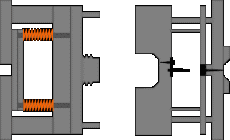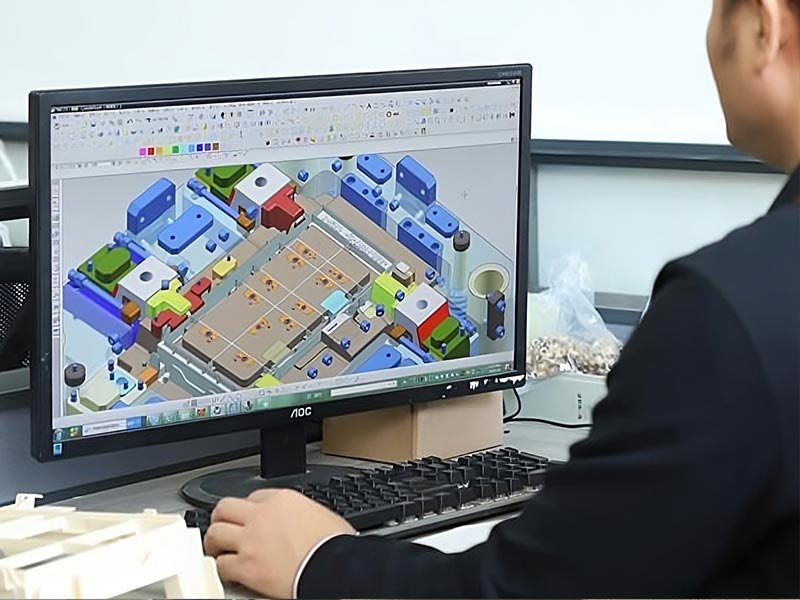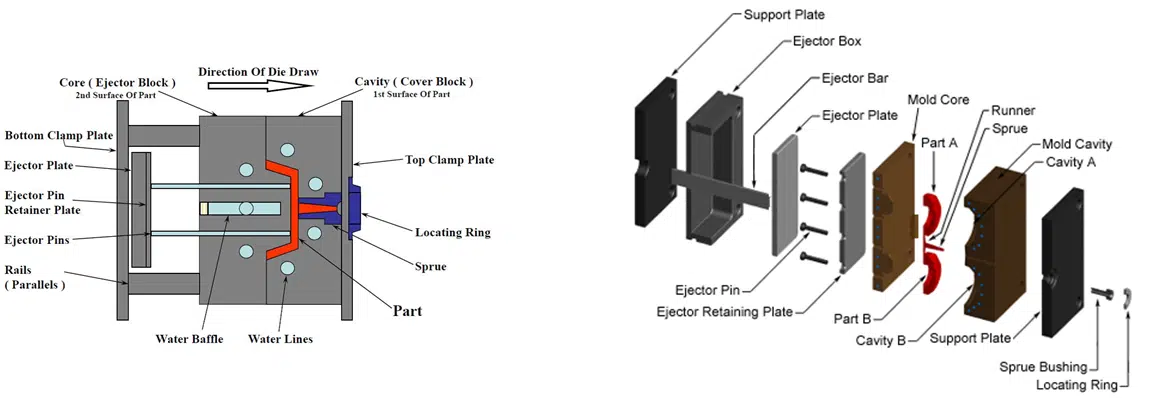Process analysis of plastic products.
Before the mould design, the designer shall fully analyze and study whether the plastic products conform to the processing principle of injection molding. Careful negotiation with the product designer is required to reach a consensus. It includes the necessary discussion on the geometric shape, dimensional accuracy and appearance requirements of the product, so as to avoid unnecessary complexity in die manufacturing.

Mould structure design
An effective set of high-quality moulds requires not only modern processing equipment and skilled mold manufacturing workers, but also an impressive design. Mould design quality contributes approximately 80% of overall mould quality for complex moulds; an exceptional mold design should meet customer requirements while meeting low processing costs, reduced processing difficulty and short processing times.
To achieve this goal, we not only understand our customers’ requirements but also the injection molding machine, mold structure, processing technology and capacity of our mold factory itself. Thus, in order to enhance mold design quality we should aim for:
Understanding every detail of a set of molds and understanding the purpose of every part is paramount for their successful usage.
As part of your design, refer back to previous similar designs, assess its mold processing and product manufacturing conditions, as well as reflect upon previous experience and learn from it.

Explore the working process of an injection molding machine to increase understanding between molds and injection molding machines.
Visit the factory to understand the process of processed products and understand the characteristics and limitations of each processing.
Understand the mould test results and mould change of mould designed by oneself, and learn lessons.
Try to use the previously successful mould structure in the design.
Learn more about the impact of mold water on the product.
Study some special die structures and understand the latest die technology.
Determine mould material and select standard parts.
When choosing mold materials, not only must accuracy and quality be considered when selecting materials but it must also take into account processing capacity and heat treatment capability of mold factories in order to make an accurate selection. In order to accelerate manufacturing time frames as much as possible standard parts should be utilized whenever possible in order to shorten manufacturing cycle times.

Part processing and die assembly.

In addition to giving the best structure and reasonable tolerance fit during the design, the precision of the mould is very important for part processing and mould assembly. Therefore, the selection of machining accuracy and machining method plays a dominant role in die manufacturing.
The dimensional error of molded products mainly consists of the following parts:
1. The manufacturing error of mould is about 1/3
2. The error caused by die wear is about 1/6
3. The error caused by uneven shrinkage of molded parts is about 1/3
4. The difference between the scheduled shrinkage and the actual shrinkage is about 1/6
Total error=(1)+(2)+(3)+(4)
Therefore, in order to reduce the manufacturing error of die, the machining accuracy shall be improved first. With the use of CNC machine tools, this problem has been well controlled. In addition, in order to prevent the error caused by wear and deformation of the die, when processing the die with high precision requirements and large product output, the key parts such as the cavity and core shall be quenched. For medium and large moulds, in order to save materials and facilitate processing and heat treatment, the mould shall be designed in a splicing structure as far as possible.
In order to solve the error caused by uneven shrinkage of molded parts and inconsistency between predetermined shrinkage and actual shrinkage, 1/3 of the product tolerance is generally selected as the manufacturing tolerance of the mold during the manufacturing of the mold. The purpose is to leave large adjustment margin for the subsequent forming process to solve the error caused by the forming process.
5.Test mould.
From the design to the assembly of a set of mould, only 70% – 80% of the whole manufacturing process is completed. For the error caused by the inconsistency between the scheduled shrinkage and the actual shrinkage, whether the demolding is smooth, how the cooling effect is, especially the impact of the size, position and shape of the gate on the precision and appearance of the product, the test mould must be used for inspection. Therefore, mold test is an indispensable step to check whether the mold is qualified and select the best forming process



